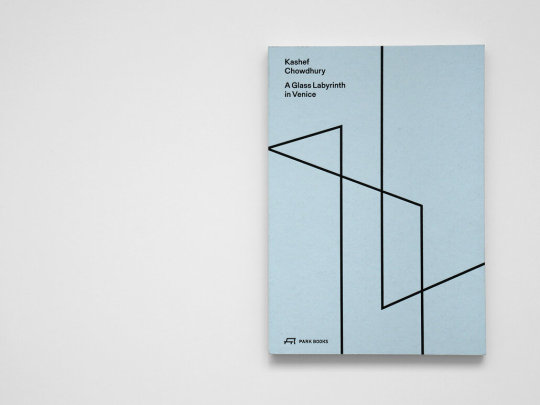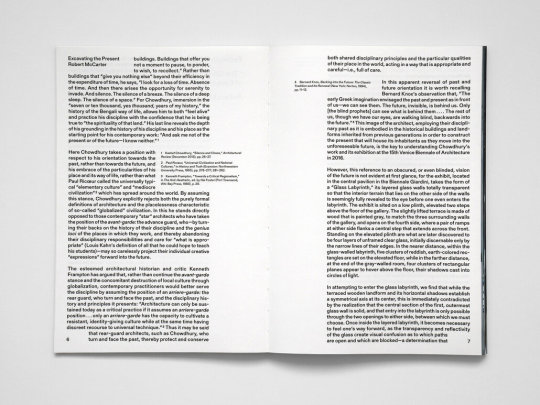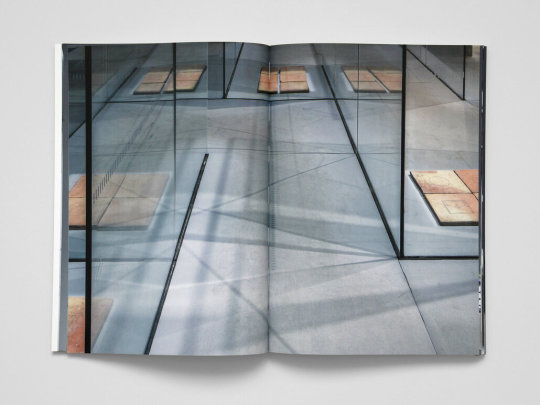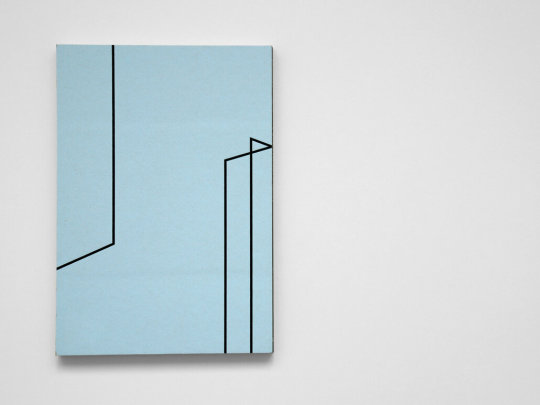#alejandro aravena
Photo










Kashef Chowdhury, A Glass Labyrinth in Venice, With essays by Robert McCarter and Alejandro Aravena, Photographs by Eric Chenal and Hélène Binet, Park Books, Zürich, 2018. Designed by Bruno Margreth, Martina Brassel
#graphic design#typography#architecture#book#cover#book cover#back cover#kashef chowdhury#bruno margreth#martina brassel#wogd#robert mccarter#alejandro aravena#eric chenal#hélène binet#park books#2010s
27 notes
·
View notes
Text














EDP Headquarters, Lisbon, Portugal — Photo by Thibault Jorge
1 note
·
View note
Text

0 notes
Photo

Amazing work by Alejandro Aravena via morpholio
Follow Souda on Tumblr
#modern#design#product design#home#decor#decoration#home decor#home design#interiors#interior design#living room#bedroom#kitchen#buildings#architecture#furniture#furniture design#industrial design#minimalism#minimal#living rooms#lighting design#lights#bathroom
10 notes
·
View notes
Text


Ocho Quebradas in Los Vilos, Chile. Designed by Alejandro Aravena.
9 notes
·
View notes
Text
#architecture#amazingarchitecture#design#interiordesign#architect#photooftheday#archilovers#luxury#travel#architecturephotography
2 notes
·
View notes
Text
100 Conferences
Belém Lima
Luisa Penha
Rui Neto
Bartolomeu costa Cabral
João Paulo rapagão
Cristina Guedes
Carlos Castanheira
Jean Pierre Porcher
Troy Howie
João Pedro Serôdio
Gil PitA Penumbra
Carlos Lobo
João Mendes Ribeiro
MVCC
Alexandre Alves Costa
Francisco Providência
Zalraa zawcwi
Nuno Senos
Arquitectos anónimos
Eduardo Aires
Andre Tavares
Go Hasegawa
Jean phillipe Vassal
Manuel Graça Dias
ESM
Nadia Tolonikva
Sou Fujimoto
Frances Kéré
Maurizio Lanzarato
Santiago Cirugeda
Eva Franch
Ali cherri
Pankay Mishra
Hans Ulrich Obrist
Kazuo Sejima
Guido Beltrami
Josep Quetglas
Inês Lobo
Nuno Brandão Costa
Made in
Nieto Sobrejano
Dominique Perrault
ESM
Camilo Rebelo
Tony Fretton
Roger Diener
Go hasengawa + Office KGDVS
SAMI
Pascal Flammmer
De Vylder
Arq. G
Barbas lopes
Nuno Brandão Costa
Norland
E2A
Arno Brandhuber
Valerio Olgiati
Pascal Flammmer
Norland
E2A
Arno Brandhuber
Valerio Olgiati
Humberto Napolitano
Rui Furtado + Ricardo Bak Gordon
Job Floris
Charllote Von Moos
Stephen Taylor
Barão Hunter + Girão Lima
Madelon Von Vriesendrop
Alvaro Siza
Francesca Torzo
Manuel Mendes
Madelon Von Vriensendrop
Richard Wentworth
Thomas Thaites
Assemble
Benjamin Seroussi
Iris Rogoff
Olivier Marboeuf
Aires Mateus + Fernanda Fragaterio
Alejandro Aravena
Peter Markli
Nuno grande + Adriana Calcanhoto
Sergison Bates
Eric lapierre
Thomas Daniel
Tim Benton
Paul Owen
Rick Joy
Juhami Pallasmaa
João Luis Carrilho da Graça
ESM+ NBC+ Luis Ferreira Alves
Bernando pinto de almeida + JM + Nuno Lacerda Lopes
Eduardo Souto Moura
SPBR Arq+ NBC
Morrettin arq. + Mapa arq.+ Cristina Guedes
Arq associados + Laboratório de projectos da FAUUSP
Metro arq. + MMBB + ÁLVARO Puntoni
Vijitha Basmayaka + Guilherme Wisnik
Camilo rebelo + João Mendes Ribeiro + Alexandre Dias
Ricardo Carvalho + NBC
101.Marina Tabassum + Inês lobo
Steven Holl
Ruy Nishizawa
Joan Oackman
Joan Oackman
Tom Avermaete
2 notes
·
View notes
Text
Magazine on Book on Affordable Housing
My Liveable City is a global knowledge platform, established in 2014 with the objective of highlighting issues that make cities across the globe inequitable from the perspective of - affordable housing, inclusivity, environmental sustainability, etc,
All direct outcomes of staggeringly rapid speed and need of urbanisation that we're witnessing around us.

Over the years a network of global experts from the fields of Urban Design / City Planning / Landscape Architecture, Environmental Planning / Technologists, who in their role as practitioners, academicians, policy makers, as part of organisations that work at the ground level, have used My Liveable City’s platform to deliberate these challenges and have shared their views on feasible solutions, shared case studies of successfully implemented projects.
Over the last decade, we have successfully expanded our capabilities of presenting our knowledge in different formats, such as - Print magazine, Online content, Books, Conferences, Expert Programs, Customised workshops, Campus activation, Knowledge Tour, etc.
My Liveable City’s book on affordable housing titled “Affordable Housing, Inclusive Cities”, explores the interface of social justice and city making through comparative discussions from Asia, Africa, Australia and Europe, as well as North, Central and South America. Pressing issues of housing affordability are deliberated, innovative solutions and insightful analysis to address the global housing crisis are offered in the book. From illustrating creative financial models to community land trusts, from modular construction to regulatory reforms, our book on affordable housing highlights diverse strategies for making housing more accessible and affordable for all.
The thirty six essays within “Affordable Housing, Inclusive Cities” book include conversations with influential administrators and civic leaders such as Somsook Boonyabancha, secretary-general of the Asian Coalition for Housing Rights, and Jaime Lerner, architect and mayor of Curitiba, who transformed Curitiba into a ‘global laboratory’ for transit planning, placemaking, and housing. Commentaries on transformative initiatives such as ‘Child Friendly Cities’, and ‘Women for the World’. And case studies of exemplary housing projects by globally known architects and planners such as Alejandro Aravena and MVRDV, (some additional expanding their housing projects). Whether you're a policymaker, urban planner, developer, or concerned citizen, “Affordable Housing, Inclusive Cities”, will offer comprehensive resource to equip you with the knowledge and inspiration needed to foster equitable and inclusive housing solutions in your community.
To read a free chapter from our book on affordable housing or for purchasing this book click the link below https://www.myliveablecity.com/book/detail/affordable-housing-inclusive-cities
Subscribe to Knowledge !!!
0 notes
Text
Blueprint for Inspiration: Top 5 Influencers for Architecture Students to Follow
In the ever-evolving world of architecture, staying inspired and informed is crucial for those studying the craft. Architecture students, in particular, stand at the threshold of tradition and innovation, eager to leave their mark on the skyline of our future. In this digital age, one of the most accessible sources of inspiration and learning comes from following the influencers who shape contemporary architectural discourse. These thought leaders not only showcase the latest trends and technologies but also provide insights into the creative process, sustainability practices, and the social responsibilities of modern architecture. Here are the top five influencers that every architecture student should follow to fuel their creative journey.
1. Bjarke Ingels: Pioneering Sustainable Innovation
Bjarke Ingels, the founder of BIG (Bjarke Ingels Group), is renowned for his innovative approach to sustainable architecture and design that's both aesthetically pleasing and functionally smart. Ingels' projects, ranging from residential buildings to large urban spaces, are celebrated for their creativity and their focus on social and environmental sustainability. Following Bjarke Ingels offers students a window into the process of integrating green technologies and innovative materials in modern architecture, making sustainability not just an option but a desirable standard.
2. Zaha Hadid Architects: Legacy of Innovation
The late Zaha Hadid left behind a legacy that continues to inspire through the ongoing work of her firm, Zaha Hadid Architects. Known for her revolutionary designs and fluid forms that push the boundaries of architecture, Hadid's firm continues to be at the forefront of technological and material innovation. For architecture students, following Zaha Hadid Architects is a masterclass in how daring designs can become reality, showcasing projects that blend art, architecture, and engineering in unprecedented ways.
3. Norman Foster: Blending High Tech and Culture
Sir Norman Foster, the mind behind Foster + Partners, has significantly influenced contemporary architecture with his high-tech designs that blend cultural sensitivity with sustainability. Foster's work, which includes iconic structures like The Gherkin in London and the Apple Campus in California, exemplifies how technology can be harnessed to create buildings that are not only functional but also symbols of cultural identity. Students can learn from Foster the importance of integrating technology with an understanding of the cultural and social context of architecture.
4. Alejandro Aravena: Socially Responsible Architecture
Alejandro Aravena, a Chilean architect known for his focus on socially responsible architecture, offers a different but equally important perspective. His work, particularly with the “half a good house” concept, demonstrates how architecture can address social and housing challenges by engaging communities in the design process. Following Alejandro Aravena can inspire students to think about architecture beyond aesthetics and functionality, considering its impact on social equity and community empowerment.
5. Jeanne Gang: Advocating for Community and Ecology
Jeanne Gang, the founder of Studio Gang, is recognized for her research-based approach to design that emphasizes relationships between individuals, communities, and environments. Her projects often explore the potential of architecture to foster community engagement and ecological sustainability. Gang’s work, such as the Aqua Tower in Chicago, challenges students to consider how buildings can contribute to the fabric of communities and the health of the planet.
Following for Growth and Inspiration
In addition to showcasing groundbreaking projects, these influencers often share their thoughts on the future of architecture, their design process, and the challenges they face, providing a holistic view of what it means to be an architect today. Following these influencers can help architecture students:
Stay Updated: Keeping abreast of the latest trends, technologies, and materials in the field.
Learn from Masters: Understanding the thought processes and philosophies that guide the work of leading architects.
Inspire Creativity: Seeing innovative designs and approaches to problem-solving can spark new ideas and creative solutions.
Think Globally: Appreciating how architecture interacts with various cultural, social, and environmental contexts around the world.
Network and Engage: Engaging with the broader architecture community, providing opportunities for networking, collaboration, and discussion.
Building Your Path
For architecture students, following these influencers is more than just a source of inspiration; it's a window into the future of architecture. It offers lessons in creativity, sustainability, and the social role of the architect in the 21st century. As students embark on their architectural journeys, these influencers can serve as beacons, guiding them through the challenges and opportunities of modern design. By observing, learning, and occasionally questioning the work of these masters, students can forge their paths in the architectural landscape, armed with the knowledge and inspiration to innovate and impact the world around them.
1 note
·
View note
Text



Architect: Alejandro Aravena
Illustration
Painting
Digital/Photorealistic
0 notes
Text

0 notes
Text
Artist Research (11)
Alejandro Aravena
About the Artist / Artwork:
Alejandro Aravena is an architect, and eco-artist from Chile, focusing on public projects that have an interest in social impact, infrastructure, and art recycling. His piece, Elemental, is an installation, made up of 10,000 square metres of leftover reused, plasterboard covering walls, and seven miles of scrap, recycled metal, suspended and hung vertically above viewers. The project aspires to create awareness of environmental strategy and local climate understanding.
Relating to my artwork experiments:
This artwork is such an impactful response to highlighting global environmental issues. I would very much like to implement similar and powerful messages in the artwork that I make, so this is a great inspiration.


0 notes



